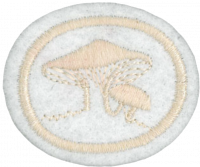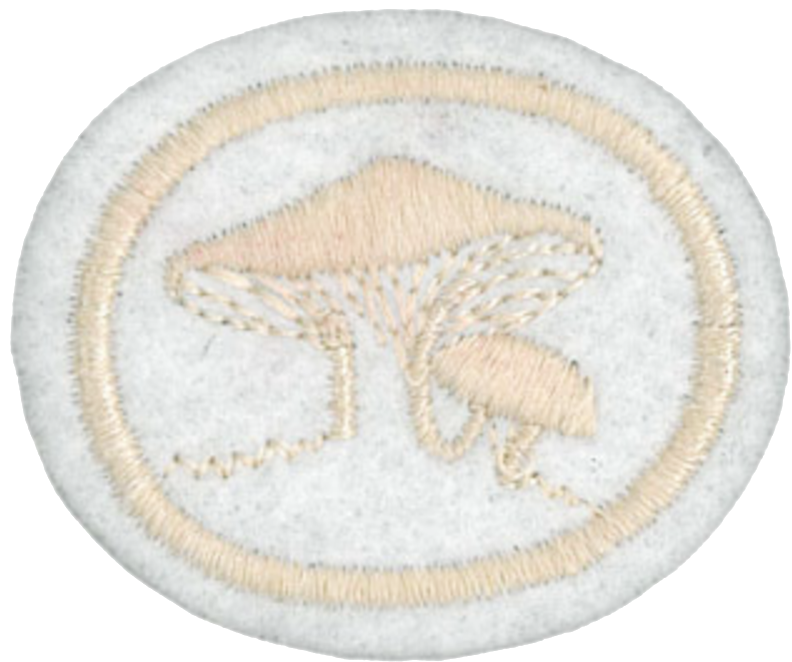Difference between revisions of "AY Honors/Fungi/Requirements"
From Pathfinder Wiki
Jomegat bot (talk | contribs) m (Add RequirementsHeader) |
m |
||
| (10 intermediate revisions by 2 users not shown) | |||
| Line 1: | Line 1: | ||
| − | + | {{HonorSubpage}} | |
| + | |||
| + | <section begin=Body /> | ||
| + | |||
| + | <b>1. <section begin=req1 /><noinclude><translate><!--T:1--> | ||
| + | </noinclude>Give the name of five classes of fungi and examples of each. | ||
| + | <noinclude></translate></noinclude><section end=req1 /></b> | ||
| + | |||
| + | <section begin=challenge /> | ||
| + | <b>2. <section begin=req2 /><noinclude><translate><!--T:2--> | ||
| + | </noinclude>Identify fifteen common fungi of your locality. Draw or photograph them from live specimens. | ||
| + | <noinclude></translate></noinclude><section end=req2 /></b> | ||
| + | <section end=challenge /> | ||
| + | |||
| + | <b>3. <section begin=req3 /><noinclude><translate><!--T:3--> | ||
| + | </noinclude>Name three important fungi and tell what their value is. | ||
| + | <noinclude></translate></noinclude><section end=req3 /></b> | ||
| + | |||
| + | <b>4. <section begin=req4 /><noinclude><translate><!--T:4--> | ||
| + | </noinclude>Tell the life history of one example of each of the following: | ||
| + | <noinclude></translate></noinclude><section end=req4 /></b> | ||
| + | |||
| + | :<b>a. <section begin=req4a /><noinclude><translate><!--T:5--> | ||
| + | </noinclude>Rust | ||
| + | <noinclude></translate></noinclude><section end=req4a /></b> | ||
| + | |||
| + | :<b>b. <section begin=req4b /><noinclude><translate><!--T:6--> | ||
| + | </noinclude>Mold | ||
| + | <noinclude></translate></noinclude><section end=req4b /></b> | ||
| + | |||
| + | :<b>c. <section begin=req4c /><noinclude><translate><!--T:7--> | ||
| + | </noinclude>Mushroom | ||
| + | <noinclude></translate></noinclude><section end=req4c /></b> | ||
| + | |||
| + | :<b>d. <section begin=req4d /><noinclude><translate><!--T:8--> | ||
| + | </noinclude>Yeast | ||
| + | <noinclude></translate></noinclude><section end=req4d /></b> | ||
| + | |||
| + | <b>5. <section begin=req5 /><noinclude><translate><!--T:9--> | ||
| + | </noinclude>Identify five fungus plant diseases. | ||
| + | <noinclude></translate></noinclude><section end=req5 /></b> | ||
| + | |||
| + | <b>6. <section begin=req6 /><noinclude><translate><!--T:10--> | ||
| + | </noinclude>Know what safety precautions to observe when handling fungi. | ||
| + | <noinclude></translate></noinclude><section end=req6 /></b> | ||
| + | <section end=Body /> | ||
Latest revision as of 01:41, 4 January 2023
1. Give the name of five classes of fungi and examples of each.
2. Identify fifteen common fungi of your locality. Draw or photograph them from live specimens.
3. Name three important fungi and tell what their value is.
4. Tell the life history of one example of each of the following:
- a. Rust
- b. Mold
- c. Mushroom
- d. Yeast
5. Identify five fungus plant diseases.
6. Know what safety precautions to observe when handling fungi.


